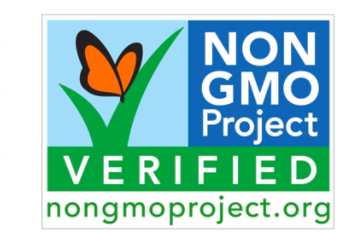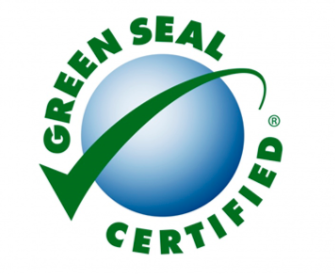
Image credit: Non-GMO Project
The Non-GMO Project conducts verification programs to evaluate the sustainability of companies’ products.
How to detect “greenwashing”
Every time you go shopping, are you get attracted to the beautiful eco-friendly-looking colors of green and brown on store posters? Words such as “eco”, “natural”, “organic”, “pure”?

Well, you might not notice that you are getting tricked with this marketing scheme called “greenwashing.” Greenwashing is when a company advertises in a misleading way to try to deceive the consumers into thinking their products are sustainable or do no harm to the environment. It is an unethical marketing technique to gain more money and gain more attraction. To deceive buyers, companies use green colors, naturistic backgrounds, and plants in their advertisements. According to Investopedia, the term “greenwashing” originated in the 1960s from the hotel industry. The hotel made statements with no evidence advertising that they used sustainable processes to create materials, therefore being called “greenwashed”.
Lauren Purcell, who works on reforestation projects and the fashion industry in Australia, wrote an article for Remake discussing greenwashing in products’ labels. She states that brands are also greenwashing when only some parts of their products are sustainable but they label their products eco-conscious. She suggests that everyone should visit a brand’s online website before purchasing their products, and refer to their “about us” page to see the brand’s history, values, and the materials they use in their products. In addition, if the companies use language that can cause misunderstandings, lack evidence for their claimed sustainability, or use language that doesn’t really show their concern about the environment, these are potential signs of greenwashing.
To evaluate the reliability of a clothing brand, use the acronym T.B.T.
T – Transparency. If a company is not transparent and uses blanket statements with no evidence or facts, they might be greenwashing.
B – Bare minimum. If a company states that they are sustainable or are doing good for the environment, while for example, using newly purchased plastic bottles for producing fabric and claiming it is made from recycled plastic. Or if the company is using only sustainable materials for a small portion of their clothing line, they are most likely greenwashing.
T – Too good to be true. If a company is selling a 100% ethically sourced, 100% ethically produced sweatshirt for $20, it is very likely that the company is lying and is greenwashing since the amount of money isn’t equal to the amount of labor. For example, an ethically sourced t-shirt would cost around $80.
A brand that was accused of greenwashing multiple times is H&M and their Conscious line. In particular, a clothing line that H&M called “edgy sustainable clothes”, a collaboration with Billie Eilish, had a lot of controversies. H&M claim that the Conscious line is made of “50% sustainable materials, like organic cotton or recycled polyester.” However, on their Q&A corner for the Conscious line, every answer is vague and never actually states the suppliers that they call “sustainable”. They use phrases such as “We’re getting there! The good news is we’ve built a new tracking system that lets us share supplier and factory details for most of our new products,” and “…independent suppliers . . . who usually own their own factories.” They use vague statements and never actually reveal the names or the specific numbers. Even though the collaboration between H&M and Billie Eilish was heavily advertised as “sustainable”, only two pieces out of the 16 were part of the “Conscious” line.
In summary, a lot of companies would much rather spend massive amounts of money to fake ecofriendliness over actually putting effort and creativity into creating a sustainable way to make fashion fun.